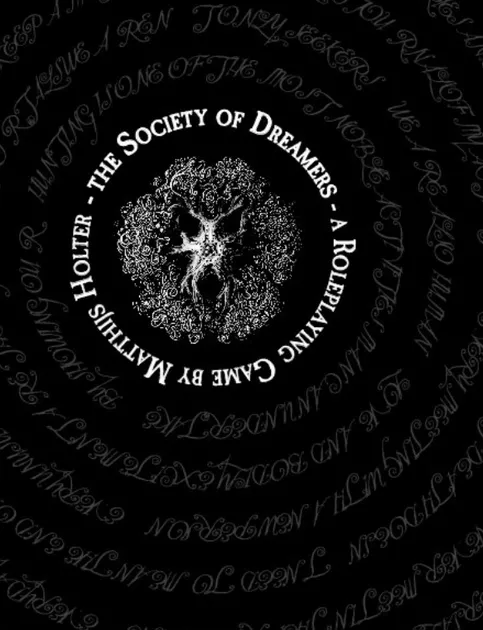Yes-no-and-or
- Published
- 2021-10-14
- Tagged
When you reach for the dice in a roleplaying game, it’s normally to answer a question. Normally, that’s a binary question (one that can be answered with “yes” or “no”).

One of the great things about Apocalypse World was the way it employed not just the yes/no axis in task resolution, but the and/but axis1. Each outcome (“yes” or “no”) can be accompanied by either an “and” (making player success more successful, and player failure more complex) or a “but” (moderating the degree of success or failure by introducing a cost or a consolation prize, respectively). In fact, Apocalypse World takes three of these moves: No, and, Yes, but, and Yes, and makes its take resolution system 100% about these (with the ability to get some Yes and in there at the end of your character’s arc).

I’ve used this kind of framework in the past when playing Society of Dreamers, probably still my favourite roleplaying game. Society is an incredibly rules-light game, with all of its rules focussing around narrative framing and long-term story beats. Coming from a roleplaying background, and playing with other players who also come from this background, we’d often find ourselves framing ours character attempting actions, but have no idea what the outcome should be.
To fix this, I created a deck of six cards, labelled:
- Yes, and
- Yes, but
- Yes, but
- No, but
- No, but
- No, and
This is an exact application of the Yes/No–And/But matrix we discussed above (and a hack of an existing mechanic in Archipelago, on which Society is based).
Between the combination of yes/no and and/but/nothing, there’s six outcomes you can find yourself facing. Which are the most interesting? Which can leave your game entirely?
I’m glad you asked. Here’s my completely subjective list.
Ranking the yes-no-and-or matrix, from least to most interesting
No
- Score: 1/5
Everyone in roleplaying hates to roll a No. It means: whatever you do, fails, and it doesn’t even fail in an interesting manner. That’s a lost opportunity, and a big problem with plenty of RPGs is that 50% of their rolls result in straight Nos, or “whiffs” as they’re also referred to.
If you can do one thing to make your game feel more exciting, it’s to remove the straight No from your game.
No, but
- Score: 2/5
Gosh, the noes are really hurting out of the gate here. I think the No, but appears less as an explicit option in games, and more as a way of softening resource or opportunity cost for a player who fails at an action. I’m thinking of the way in Lady Blackbird that a character failing a roll gets back any dice they’ve spent: it’s not really an explicity No, but, but it does function in that way.
Even so, No, but doesn’t really do much in the game. It doesn’t much let the players advance their agenda, and it really doesn’t give the GM a chance to advance theirs. If you’re thinking about introducing a mechanic for No, but answers, I’d say to you: why not make it yes, but instead?
Yes, and
- Score: 3/5
Sometimes when you go to career counselling one of the things the person doing the counselling will ask is “what would it look like if you succeeded beyond your wildest dreams?”. In RPGs, that’s rolling a Yes, and.
Yes, and tells the player to narrate what they want, and then sits there saying “and what else happens?” It’s a real chance for the player to push as hard as they can toward their goals, to hog the spotlight, to be awesome.
The only reason it scores 3/5 and not higher is that it’s still the weakest of the Yes options. That’s not to say that it sucks, merely that all the others are great.
Yes
- Score: 4/5
Players like to succeed, and this is the quickest, easiest way to success. Yes means exactly that: the player succeeds, no bells, no whistles. It’s easy to discount the straight Yes because it’s so uncomplicated, but don’t forget that it’s also a staple of the process.
I think Yes and Yes, and sit very close together on this spectrum, more so than my whole-number ranking system implies. The only reason that Yes scores higher, is that it’s more universally applicable. Yes, and is a great addition to a game - it gives people something to aim for, a real moment of awesome. But I feel it only works as an exception to your average, everyday success.
No, and
- Score: 4/5
Every No should be replaced with a No, and. This is classic Powered by the Apocalypse/fail forward thinking, but there’s a reason it’s been carried through into so many other games and systems.
No, and is an excuse for you, as a GM, to push the story along your path, to make everything more interesting for you. Got a plot point you’ve been waiting to reveal? Got a monster hiding in the next room? Want to give your PCs just a bit more adversity? No, and can be your main vehicle for introducing trouble. That’s incredibly powerful, and the vast gulf between the yawn-inducing No and the edge-of-your-seat No, and is incredible.
Yes, but
- Score: 5/5
Yes, but drives gameplay almost as heavily as No, and. Not only does the PC succeed, you also get a chance to contribute. It’s like both of you get a turn!
Why do they end up ranked this way?
After lining these results up, I’m working on a theory, and it goes like this:
In your average trad game, with one GM and one or more players, there’s two large-scale agendas being forwarded.
- The GM wishes to reveal the antagonists2 and their intentions, and then execute on those intentions.
- The players wish to forward their interests, act against the antagonists, and foil their plots.
A particular dice roll (or other task resolution mechanic) should allow either of the GM or the players to forward one of these agendas.
These outcomes are arranged in a pattern. No, the outcome that prevents anyone from doing anything, is ranked at the bottom. No but might give the players a slim opportunity to forward their own agenda, but in reality it’s a No with a weak consolation prize. It’s second-from-bottom.
Next come Yes, and and Yes, which directly and immediately allow the players to forward their own agendas. While Yes, and also gives them a chance to do something else, I feel it’s similar to No, but in that the bonus result is just that, a bonus, but doesn’t really push anyone’s agenda.
Then we hit No, and. The secret with No, and is that is lets the GM forward their agenda. In fact, of all the No outcomes, this is really the only one that gives anyone a chance to push the game along. It’s also one of only two results that gives the GM a chance to do something.
Our final choice, Yes, but, is unique among these results: both the GM and player gets to forward their agendas. That’s why it comes in so high, because it has a chance to push both parts of our narrative forward.
So we can condense this all into a summary table:
| Result | Forwards player agenda | Forwards GM agenda | Player gets a bonus | Rating |
|---|---|---|---|---|
| No | ✗ | ✗ | ✗ | 1/5 |
| No, but | ✗ | ✗ | ✓ | 2/5 |
| Yes, and | ✓ | ✗ | ✓ | 3/5 |
| Yes | ✓ | ✗ | ✗ | 4/5 |
| No, and | ✗ | ✓ | ✗ | 4/5 |
| Yes, but | ✓ | ✓ | ✗ | 5/5 |
Now obviously this is all based on (a) my subjective rating, and (b) a bit of post-hoc analysis - I don’t think I’ve really proved anything. But I think it’s interesting to see what this says about my own preferences in game design, and it definitely gives me a tool to use - this model of double agendas - when designing my own games.
